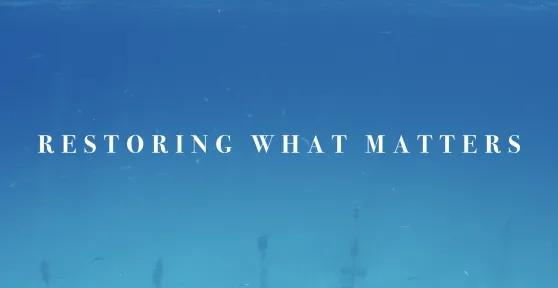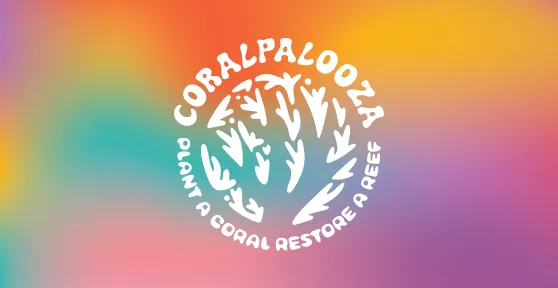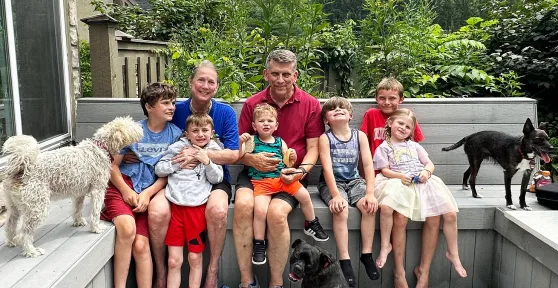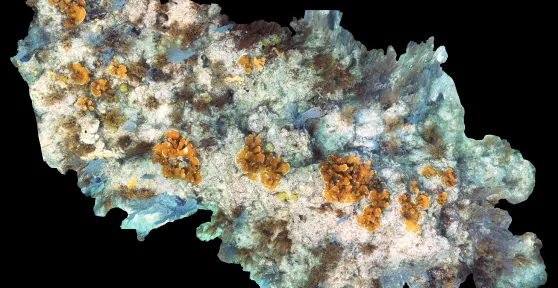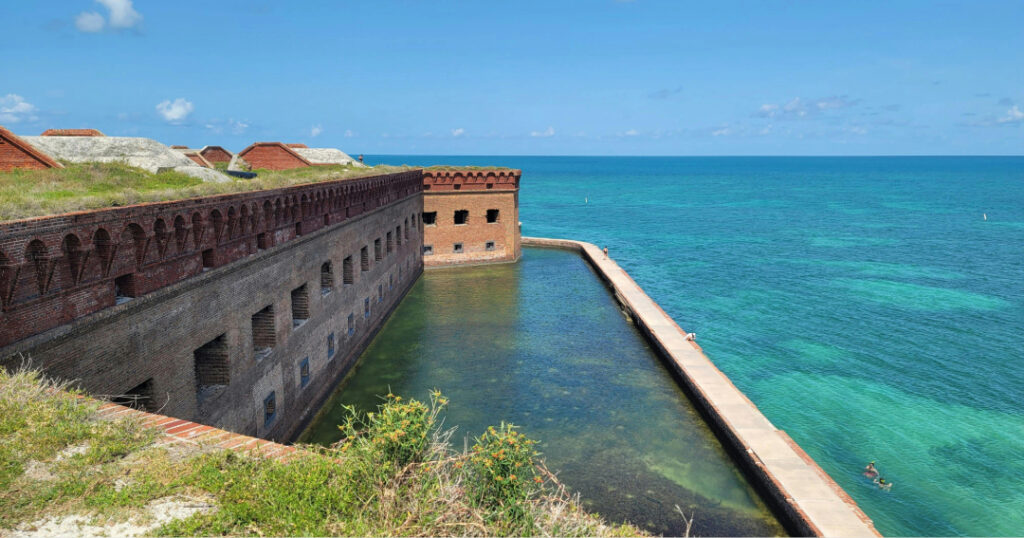
The corals surrounding Dry Tortugas National Park, like much of Florida’s Coral Reef, were devastated during the 2023 Fourth Mass Global Bleaching Event.
In response, Coral Restoration Foundation™ (CRF) and Shedd Aquarium joined forces on a research expedition to the southernmost point of Florida’s Coral Reef. The shared goal: reintroduce staghorn coral to the Dry Tortugas and study how different genotypes respond to rising ocean temperatures in one of the most remote reef systems in the continental United States.
“This mission was especially meaningful coming so close to the publication of our co-authored paper in Science documenting the functional extinction of staghorn and elkhorn corals in Florida,” said Robyn Mast, Key West Restoration Coordinator at Coral Restoration Foundation. “To be back in the water with Shedd, reintroducing these same species to one of Florida’s most remote reef systems, was both humbling and hopeful — a reminder that even in the face of devastating loss, we still have a chance to help these corals recover.”
Landmark Restoration in Dry Tortugas
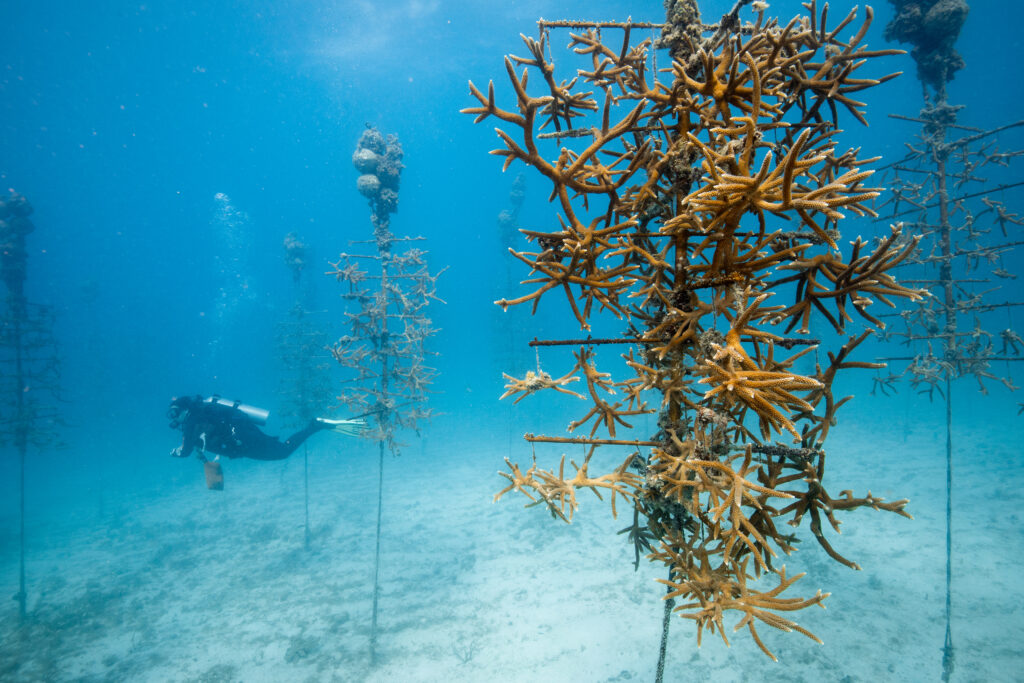
The expedition began with Shedd’s world-class research vessel, the Coral Reef II, anchoring at the CRF Tavernier Nursery. There, the CRF team, headed by Robyn Mast, worked with Dr. Ross Cunning from Shedd Aquarium to select 20 genetically distinct staghorn corals — 10 known for their high heat tolerance and 10 with average to lower tolerance. These fragments were harvested, carefully installed in onboard live wells, and transported overnight to the Dry Tortugas, marking the start of a joint effort to reestablish healthy staghorn populations in the region.
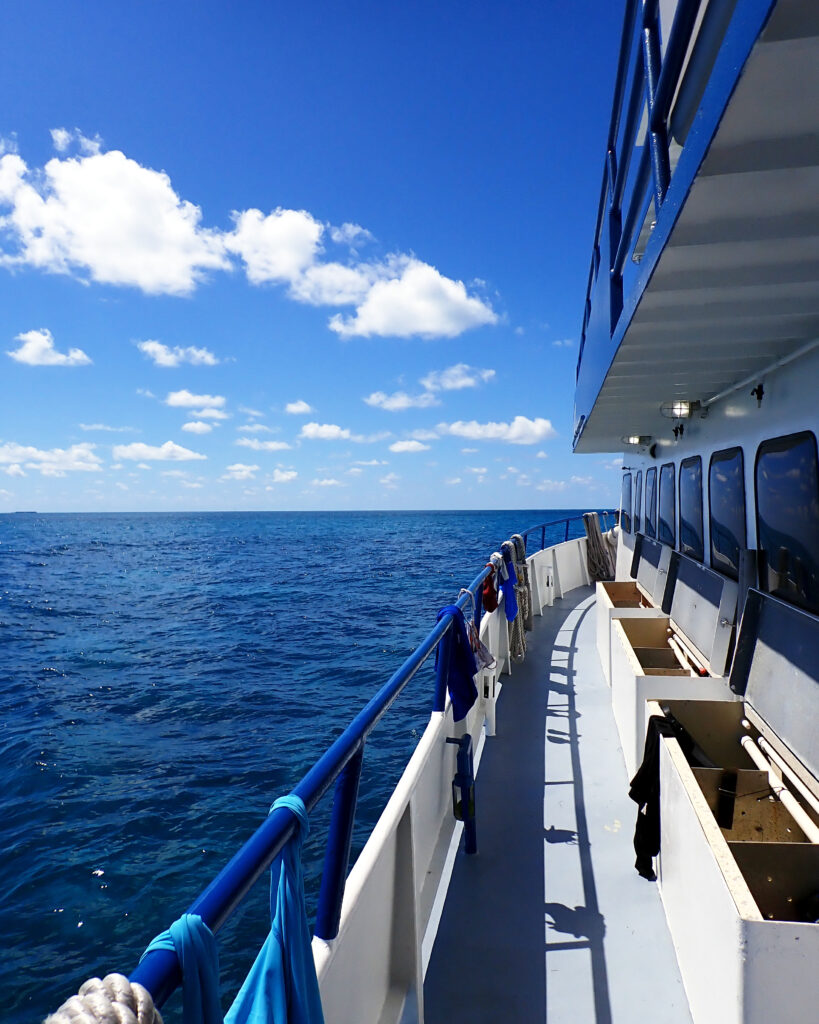
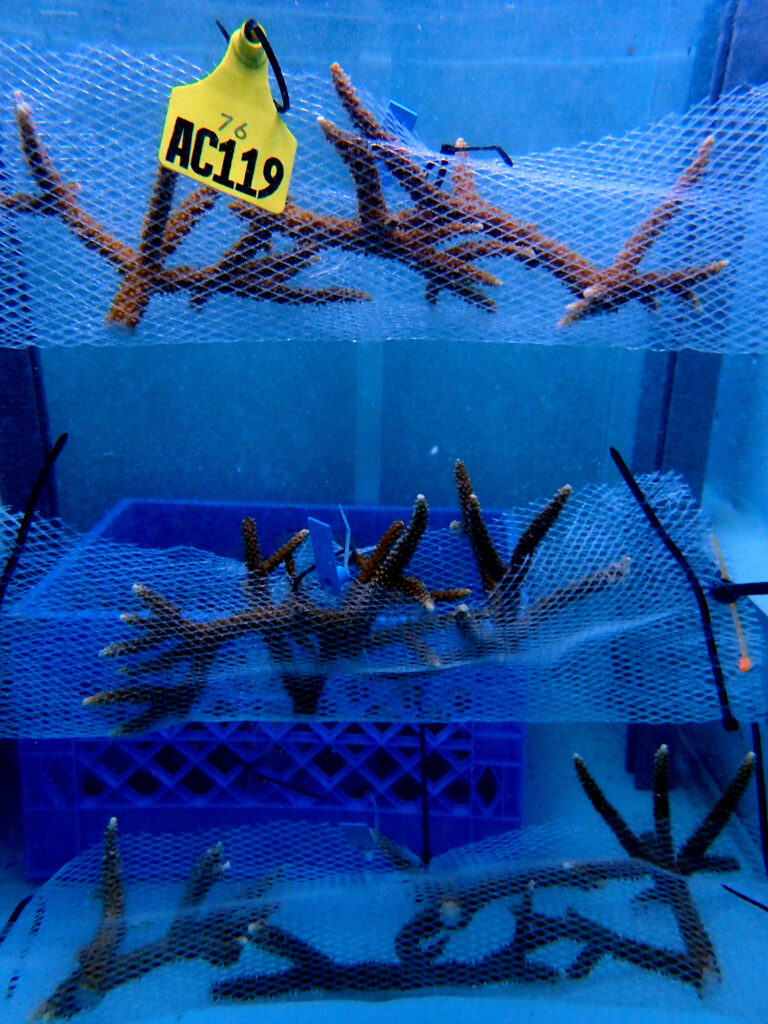
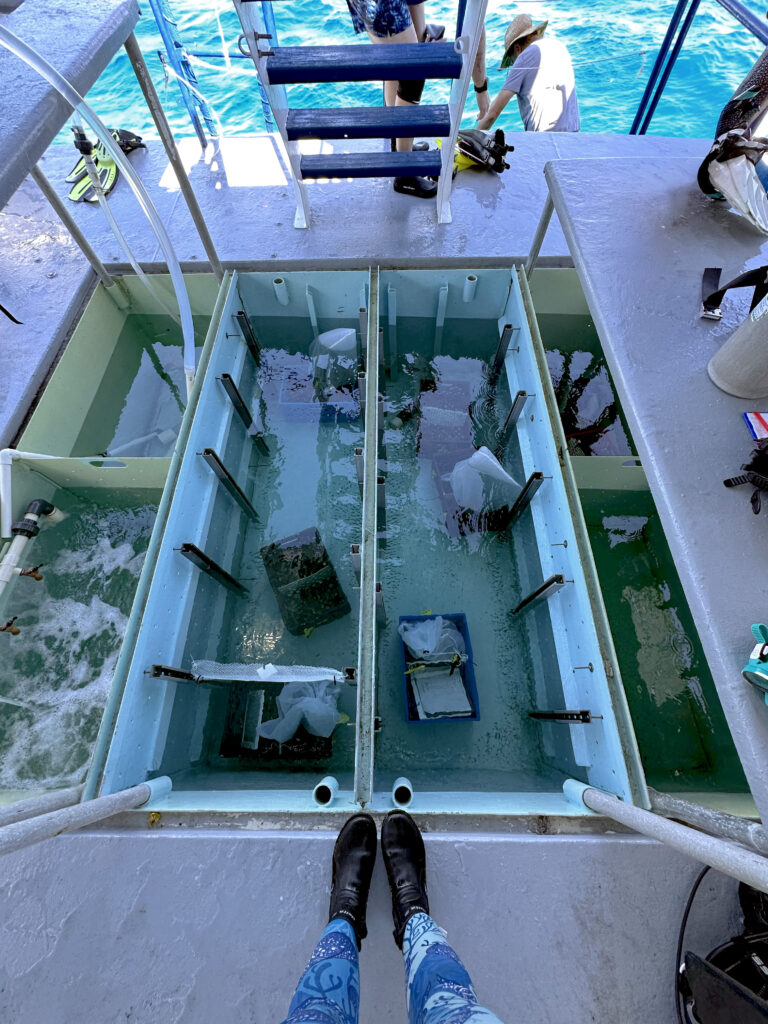
Two reef sites were selected for outplanting, where 80 coral fragments were attached to the reef substrate using the hammer-and-epoxy method. High-resolution photomosaics were captured to document their starting condition and will be used to monitor growth and survivorship over time. This process was repeated at a second site on the northern boundary of Dry Tortugas National Park the following day.
This marks a landmark moment for coral restoration in Florida — coral raised in the CRF Tavernier Nursery now rehomed in the Dry Tortugas for the first time. This effort not only extends the reach of restoration across the state but also demonstrates the power of collaboration and science-driven conservation in rebuilding the resilience of Florida’s Coral Reef.
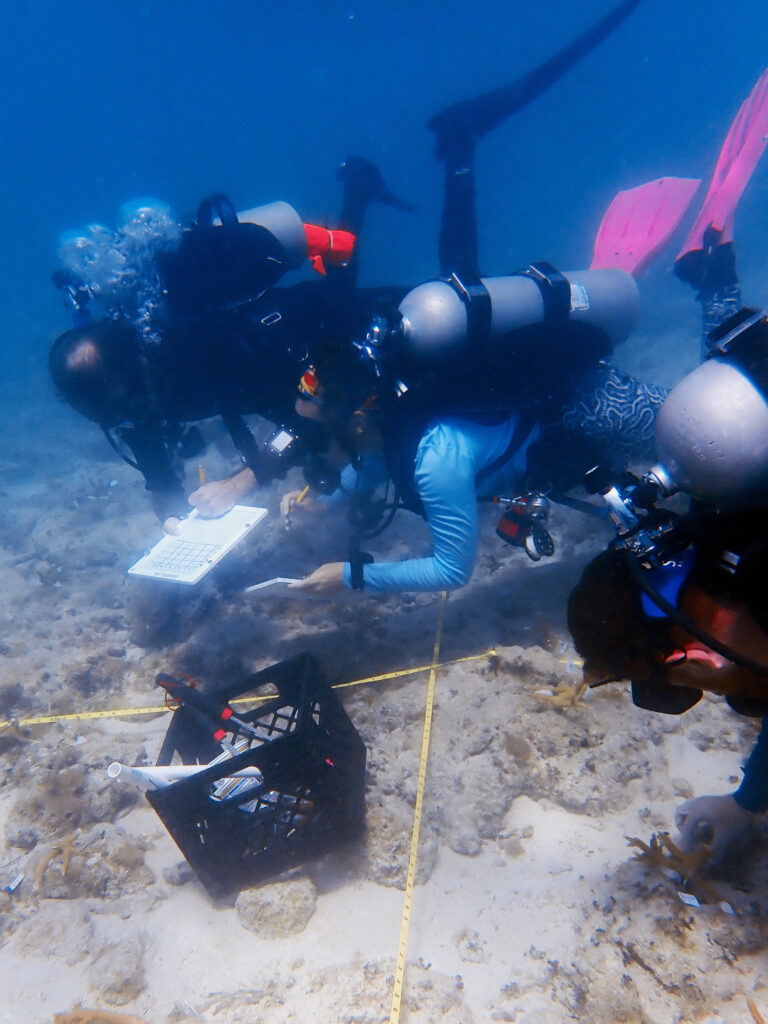
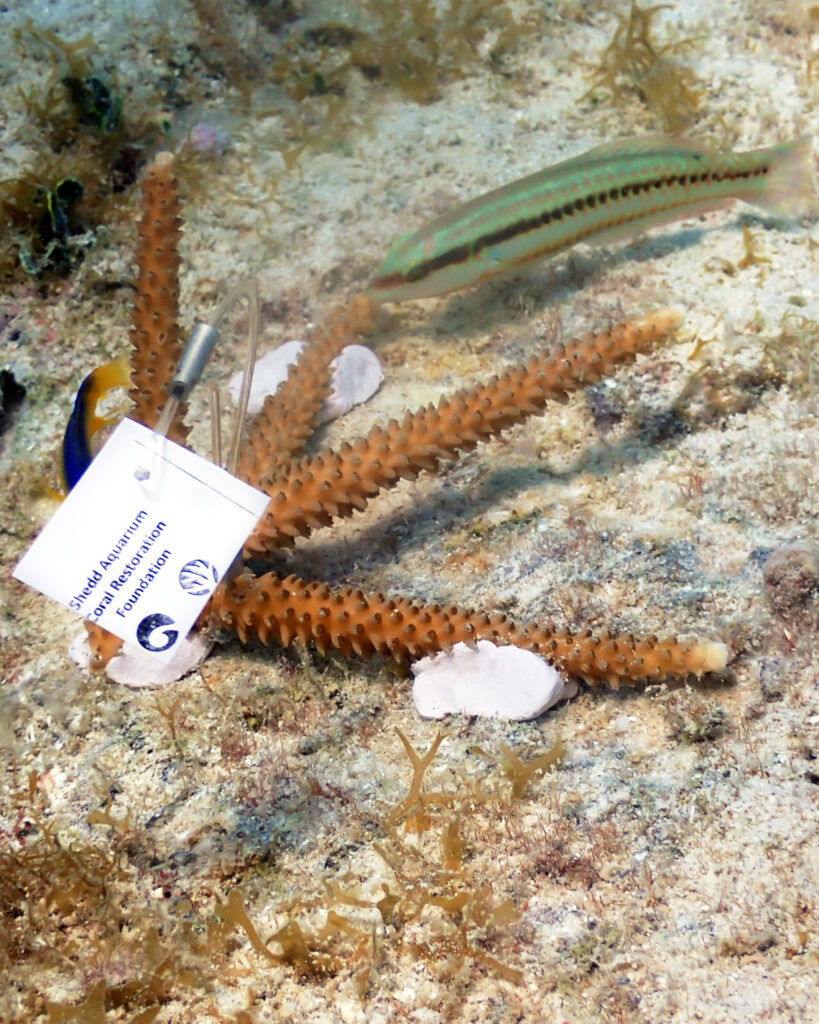
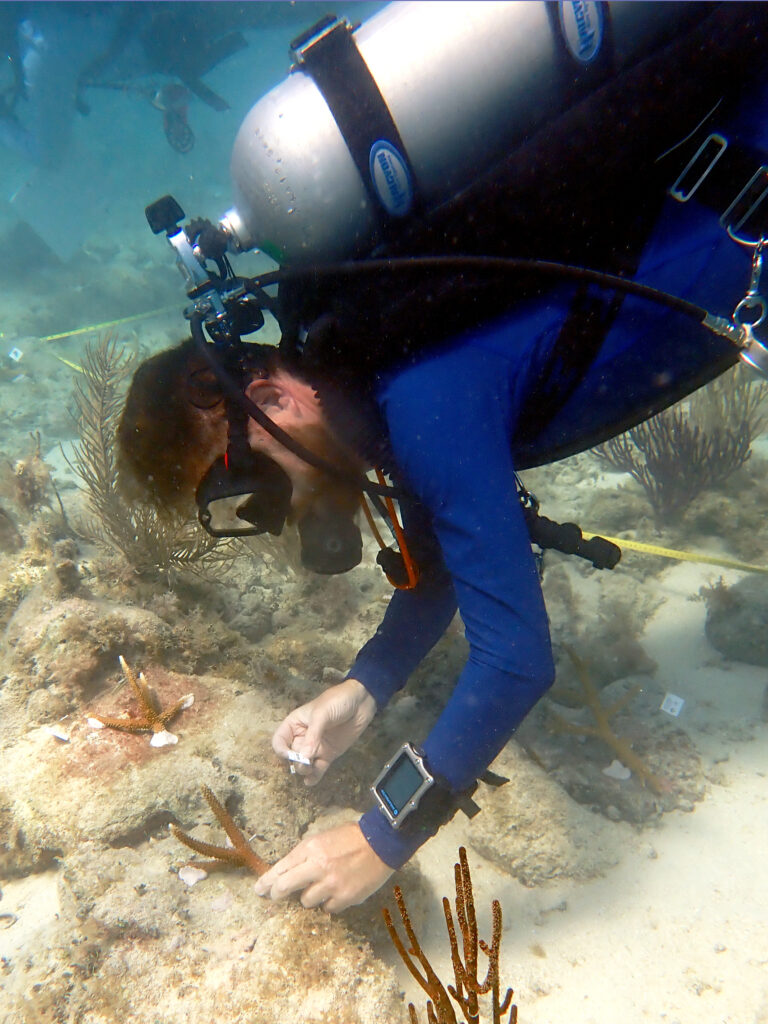
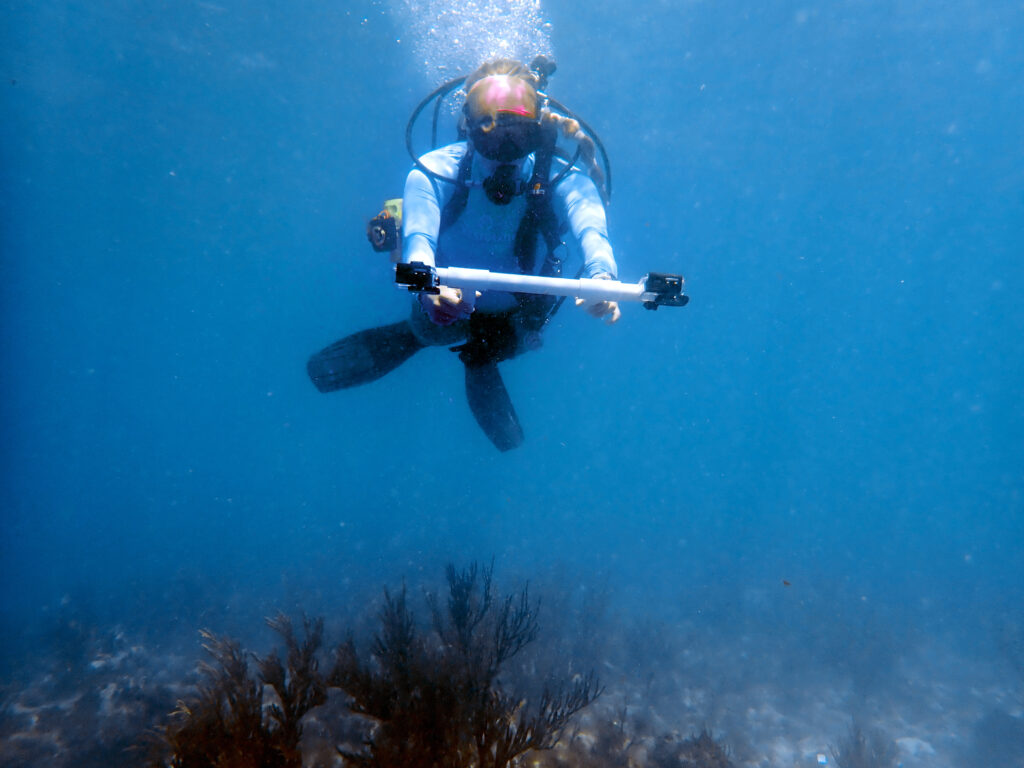
Surveying the Reef from Dry Tortugas to the Keys
As the expedition moved north through the Florida Keys, the team conducted Disturbance Response Monitoring (DRM) surveys and collected coral samples from seven other reef-building species for genetic analysis.
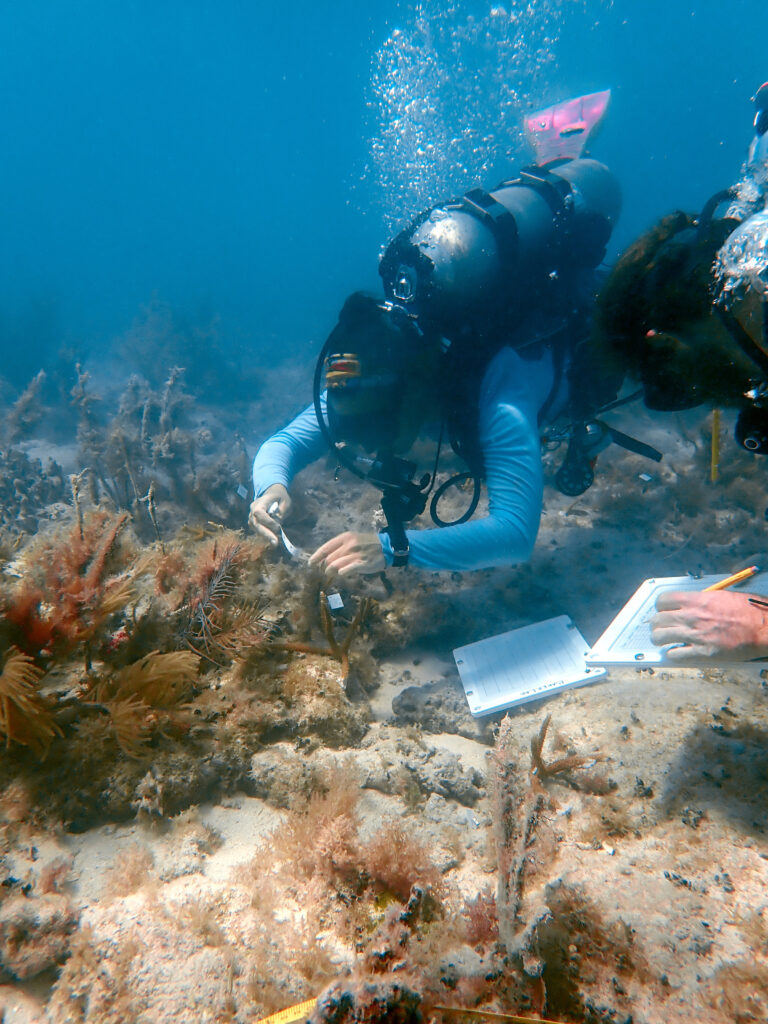
Photo: Coral Restoration Foundation™
These surveys aimed to evaluate bleaching conditions, identify potential disease outbreaks, and document habitat quality and species abundance across Florida’s Coral Reef. This ongoing effort was carried out alongside more than a dozen organizations in collaboration with the Florida Fish and Wildlife Conservation Commission and contributes to a growing dataset on reef health.
Advancing Knowledge Through Collaboration
This collaboration brought together restoration and research expertise, combining Shedd Aquarium’s scientific resources with the experience that Coral Restoration Foundation brings in coral propagation and outplanting.
Beyond the fieldwork, it strengthened professional connections, advanced understanding of coral diversity, and reinforced a shared commitment to restoring Florida’s Coral Reef.
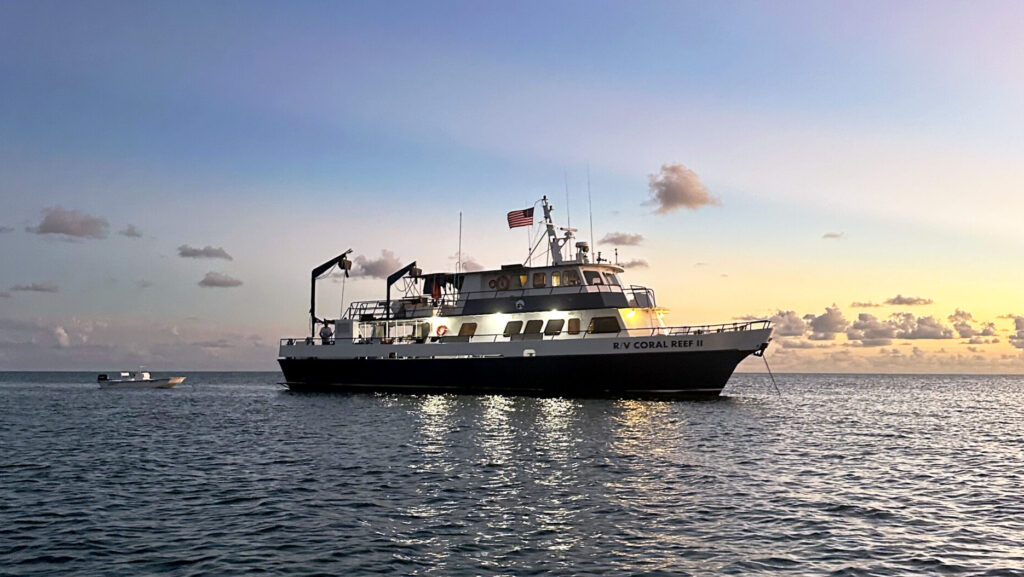
Written by: Robyn Mast, Chelsea Co and Alice Grainger
